Compassion International: How Much Money Goes to the Child?
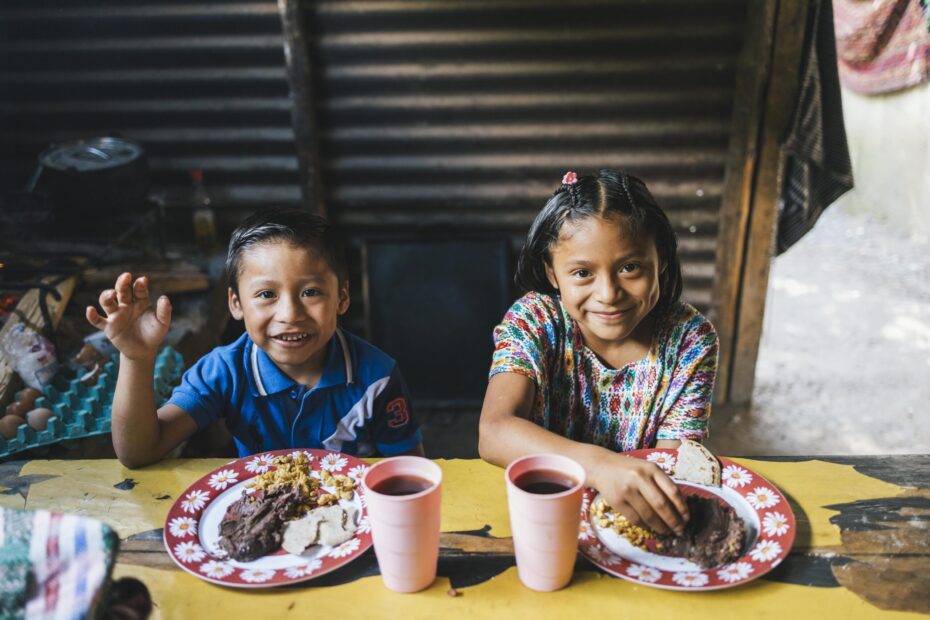
When you give to Compassion International, how much money goes to the child you sponsor? Learn how your monthly donation is used to care for a child living in poverty.
Continue Reading ›How Do the Poor Describe Poverty?
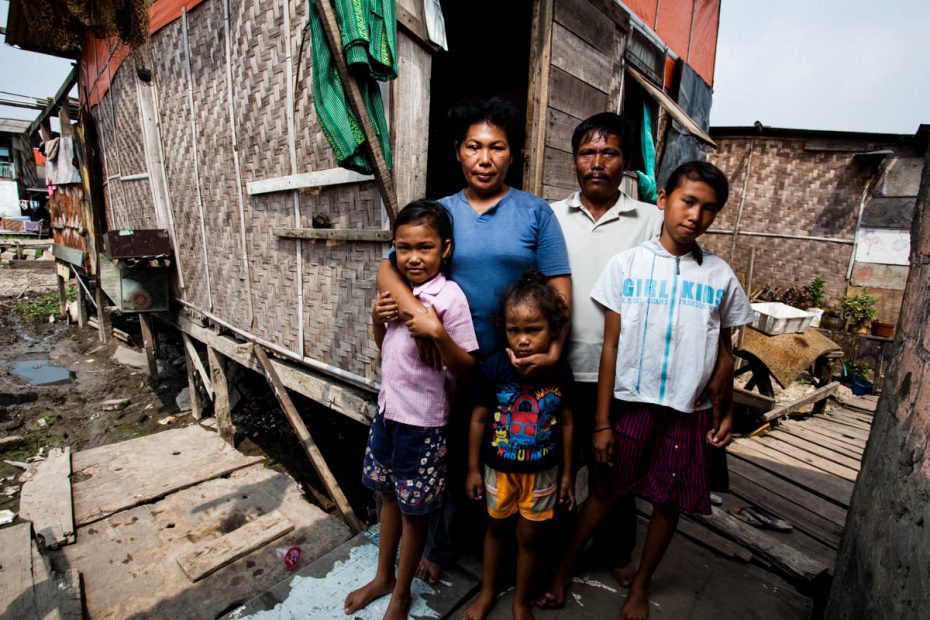
A survey conducted in Niger by the Office of the Prime Minister asked the poor of that country to describe poverty. Their answers included: dependence, marginalization, scarcity, incapacity and restrictions on rights and freedoms.
Continue Reading ›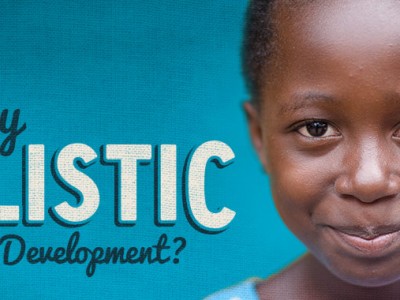
Why Holistic Child Development?
Holistic. Body, mind, heart and spirit. It makes all the difference in the world and this infographic will show you how.
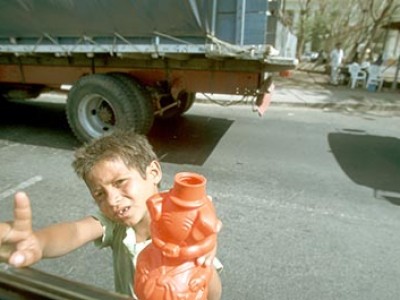
What Reduces a Child to “Professional Beggar”?
The monster of poverty will not consume all. God’s mercies shield; His compassion protects. And it is compassion that drives us to act.
Poverty is a Lie
“At its very core, poverty is a mindset that goes far beyond the tragic circumstances. It is the cruel, destructive message that gets whispered into the ears of millions by the enemy Satan himself: ‘Give up! You don’t matter. Nobody cares about you. Look around you: Things are terrible. Always have been, always will be. Think back. Your grandfather was a failure. Your parents couldn’t protect or take care of you. Now it’s your turn. You, too, will fail. So just give up!'” — Wess Stafford
What is the Definition of Poverty?
The absence of a clear definition is a serious problem for organizations whose missions are to eradicate poverty or, in our case, to release children from poverty.
Tell us how you understand and define poverty, and then in future blog posts we’ll explain the basis of our holistic approach to ministry and what our definition and understanding of the problem is.
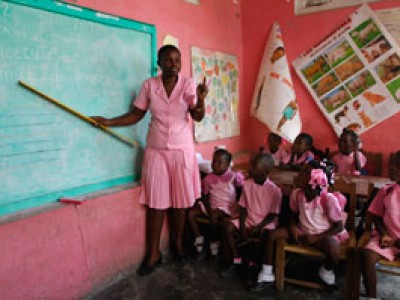
How Do We Teach the Children in Our Programs?
Our holistic child development model is central to our mission of releasing children from poverty in Jesus’ name. And the curriculum standards we have put in place in all of our programs are key to achieving this goal. We have created a global curriculum to help develop children holistically—physically, spiritually, cognitively and socio-emotionally. It is designed to be nonacademic, similar to an after-school enrichment program. For example, instead of learning math, children learn how to apply mathematical skills.
How Do We Help Sponsored Children With Serious Heart Conditions?
There are nearly 6 million children worldwide with potentially treatable congenital and acquired heart defects that do not have access to care. In 2009, of the estimated 6,000 children in Uganda in need of cardiac intervention, only 172 received treatment (Uganda Heart Institute).
Alex was one of the statistics — a child with a heart problem with seemingly no hope for treatment. Alex’s father recalls:
“It started as a fever. My wife and I took my son, Alex, to the hospital, but it did not get any better. And when we took him to a bigger hospital, his symptoms baffled the doctors. They had no solution for us but to refer us to the Mulago Heart Institute where we started on a course of treatment.
“This went on for three years with no change. At that point I started to pray to God, saying if it is God’s will to take him away from us then so be it. I spoke to Alex as well and he was of the same mind. Because the doctors saw that I was poor they feared to tell me about the operation abroad because they knew I could not afford it.”
Like many children whose heart conditions go untreated, Alex and his family prepared for the worst. (more…)

My People Are Destroyed From Lack of Knowledge
The Pastors Discipleship Network (PDN) is an initiative begun by Leadership Development Program graduate and Moody Bible Institute scholar Richmond Wandera. It exists: “to train and equip local pastors in Africa with basic study tools for accurately interpreting God’s Word through monthly seminars, accountability relationships, and the provision of study resources.”
An Oasis of Talent in the Mire of Mathare Valley
The Saturday program at Mathare Community Outreach begins by focusing on the spiritual development of the children. It starts with devotions and worship and is followed by 30 minutes of small group Bible study.
For the children who have accepted Christ as their Savior, the center staff conduct a discipleship class which occurs during the Bible study.
In addition to the spiritual development of the children, the center has programs to address the physical, social and economic needs of the children.
The key factor in creating a stable economic future for the children is education; education is the key.
But beyond focusing on excellence in school, the center staff help identify and develop the talents of the children, musically and artistically, so they have even greater opportunities to succeed.
The center has a cooking program, choir and music program and drama team and works with the children to develop their public speaking abilities.
Here’s a sample of what the kids are producing.
HIV and AIDS in Uganda
Uganda is often held up as a model for Africa in the fight against HIV and AIDS. Strong government leadership, broad-based partnerships and effective public education campaigns all contributed to a decline in the number of people living with HIV and AIDS in the 1990s.
Despite this impressive reduction in the spread of AIDS in Uganda (from 30 percent in the 1980s to 6.5 percent to date), AIDS is still infecting and killing many Ugandans. Uganda’s HIV prevalence rate has stagnated over the past four years, meaning that the country is not managing to reduce the number of new HIV infections.
Damalie Andabati, the health specialist in our Uganda Country Office, says,
“Currently 6.3 percent of Uganda’s population is infected with HIV, and a new issue that has been discovered by the Uganda Virus Research Institute is that 66 percent of the new infections are among married couples.”
The reason for the high percentage in this unexpected group is not yet certain.
It is feared that HIV prevalence in Uganda may be rising again. It has been suggested that antiretroviral drugs have changed the perception of AIDS from a death sentence to a treatable disease. This perception may have reduced the fear surrounding HIV.
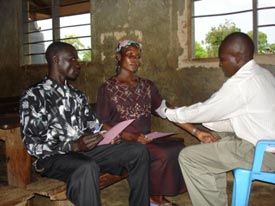 As part of our holistic outcomes around health, voluntary counseling and testing (VCT) for HIV is part of the regular health screenings conducted for the parents and children at the child development centers.
As part of our holistic outcomes around health, voluntary counseling and testing (VCT) for HIV is part of the regular health screenings conducted for the parents and children at the child development centers.
Kansanga Child Development Center carried out a VCT session back in March and 233 caregivers and children were tested, which is one of the best success stories of beneficiaries being tested for HIV by Compassion Uganda.
Kansanga, a red-light district of Kampala, is a community in the slum areas, and the child development center is located one kilometer away. Much effort has been put in clearing this district of prostitution and raising awareness about preventing HIV. Many fear being seen going for the test or seeing the results they will receive from the test.
More than 60 percent of Uganda’s population is illiterate and ignorant, and others are even too poor to own radios from which they would hear information on where to go for testing. Our church partner staff, and government officials, are hopeful for the future — that with tireless effort in community training and sensitization this figure will be adjusted.
Help support Compassion’s AIDS Initiative today.
Complementary Interventions With Heidi Partlow
The first thing Heidi Partlow does each morning is check her e-mail. It’s always packed. As Compassion’s complementary interventions manager, she gets all kinds of e-mails each day.
E-mails about how to submit a proposal for a complementary interventions (CIV), e-mails from marketing departments about the particulars of a CIV, e-mails about a disaster that has just occurred.
So her e-mail inbox pretty much dictates her day. After attacking the onslaught of messages each morning, she has a cup of tea at 10 o’clock.
Then she spends a lot of time running around, especially during a week where there has been a crisis, like with the recent hurricanes, getting approvals for funds to be distributed.
But she slowed down enough to give us a peek into CIV and her world. (more…)


